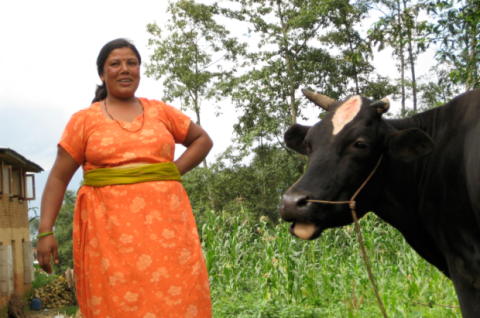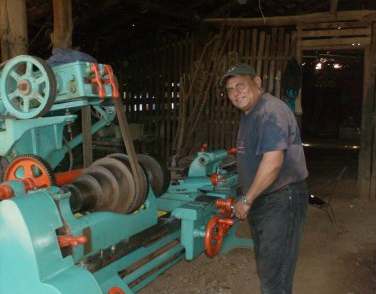I have been curious how Kiva deals with currency risk. Kiva is a great resource for providing micro-lending and the opportunity to engage in choosing who you will lend to. But my transactions are all in US$ and the loans in the field are in the local currency. This creates an issue of what happens when currency values fluctuate. I asked a question on the Kiva LinkedIn group (an excerpt is shown here):
A lender takes out a loan of $100 with 10 months to repay. If the loan is in the local currency, what if the value of that currency during the 10 months declines by 20%? Then the bank has received all their money back but they owe Kiva $100 but they only have $80 worth of the local currency (again ignore that the payments are made monthly – since it doesn’t effect the issue at hand – currency rates). Hows does Kiva deal with this currency risk? Do the local partner banks take the risk…?
I was directed to a great slideshow showing Kiva’s lending policies. It turns out Kiva does have the local banks take the currency risk. So they have to pay back $100, if the local currency value is now $80, they would have a loss, of course the local currency value could also have risen, then the local bank has a gain.
They have a chart showing the cost of capital to local Kiva lenders at 0-1% plus currency exchange risk (which they say some banks choose to hedge and others just take the risk), which is about the lowest cost of capital around. Kiva charges no interest on the loans to the local banks. The costs come from the requirements (the cost of adding a profile – the time of staff of the bank to add the information…) of using the Kiva website.
Update: Kiva updated their policy to put any currency loss greater than 20% on the lenders (up to 20% losses are taken by the bank, above 20% are taken by those lending through Kiva). But the banks can chose to take the currency risk, which they could do to encourage lenders to select their loans to fund.
Curious Cat Kiva connections: Curious Cats Kiva lending team – Curious Cat Kivans - Funding Entrepreneurs in Nicaragua, Ghana, Viet Nam, Togo and Tanzania – Kiva Fellows Blog: Nepalese Entrepreneur Success – Kiva related blog posts

Kiva has added a fellows blog – which is a great idea. The fellows are funded by Kiva (fellows are unpaid) to go to spend time in the countries Kiva facilitates loans for working with the local partners. This post is about Rita Bashnet (in photo) an entrepreneur from Nepal:
…
Five years ago, Ms. Rita took her first loan of NRs. 10,000 (USD $150) and purchased some extra seed and fertilizer in the hopes of expanding her small vegetable patch. With the profits from this initial investment and a second loan from Patan Business and Professional Women (they offer a graduated loan program), she then purchased her first dairy cow.
…
After hearing about a program that subsidized the installation of methane gas storage tanks, Ms. Rita took another loan and applied for the program. With this new system, she is now able to capture the valuable gas released from her cow’s waste in a simple controlled-release storage tank. Today she no longer purchases gas from the city and can even sell some during times of shortage.
…
Ms. Rita exemplifies the potential of microfinance. A combination of access to capital and strategic investment has allowed her and her family to drastically improve their economic situation in a short five years.
Great story, and exactly my hope for using capitalism to improve the standard of living for people around the globe. I notice today, for the first time, some of those seeking loans are about to have their listings expire unfunded. Kiva gives listings 30 days to be funded. I have no problem if some loans are not funded (I want to help entrepreneurs by providing funding to build a business – some loans are for things like adding a room onto their house, which is fine but not what I want to support with interest free loans from me). But, this is a big change from when I couldn’t find anyone to loan to (they had so many people looking to lend that they didn’t have enough loans to fund). If you haven’t loaned money through Kiva (or you haven’t added to your loan portfolio recently), please consider it now. If you do, send me your Kiva lender link and I will add it to Curious Cat Kivans. My biggest wish for this blog is to get more readers listed on that page.
Related: Using Capitalism to Make a Better World – Funding Entrepreneurs in Nicaragua, Ghana, Viet Nam, Togo and Tanzania – 2006 Nobel Peace Prize to Economist – Frontline Explores Kiva in Uganda – Trickle Up

I have made some additional loans through Kiva, $250 for 5 loans in: Nicaragua, Ghana, Viet Nam, Togo and Tanzania. I have now made 37 loans for a total of $1,775. 5 loans of $250 have been paid back (and I relent the proceeds). Kiva says 5.64% are delinquent. While they show my delinquency rate they don’t show me which loans are delinquent. Frankly I think that figure may be in error (maybe it is counting one that was delinquent but is not now – see next paragraph). In any event all loans appear to have been paid off in full on time or are being paid in full now on time.
In any event no loans are in default. One loan in Kenya for bike repair shop (that for whatever reason I especially liked) and did connect me more to the troubles in Kenya recently. Kiva mentioned many banks were having trouble keeping in touch with clients as many people fled violence. For two months there was no activity then there was a payment for 3 full months. I was happy when a new payment came in, not for the money being repaid (which shows again that my aim with this money is not a return for me but to provide opportunities to entrepreneurs), but for confirmation he was doing well.
Photo of Cesar Augusto Santamaría Escoto in his welding workshop, Chinandega, Nicaragua.
If you have a Kiva page, let me know and I will add a link to it on the Curious Cat Kivans page.
Related: Provide a Helping Hand – Microfinancing Entrepreneurs – Entrepreneurship posts on the Curious Cat Science and Engineering blog
Kiva is a great organization I have mentioned before (e.g. microfinancing for entrepreneurs). They let people to loan money directly to entrepreneurs around the world through their web site. Loan can be as small as $25. As the business produces income from the capital loaned the loan is paid back. Kiva is setup as a charity, so those making the loans do not make a profit. In actuality the capital is provided through a Kiva partner (intermediary) that often does change interest to the entrepreneur (many are non-profits themselves that use the interest to fund operating expenses – and I think some are for profit, though I may be wrong on that).
I loaned an additional $300 to 6 entrepreneurs today and donated $50 to Kiva. The entrepreneurs I helped fund are located in: Togo, Dominican Republic, Senegal, Nicaragua, Bolivia and Uganda. One of the things Kiva does very well is take advantage of the internet to connect to these people. You can see short profiles and photos of them on my Kiva profile.
I hope some of you readers will join and provide loans. If so I would love to add a link to your profile from the Curious Cat Kiva supporters page.
Related: Using Capitalism to Make the World Better – Kiva: Internet based Microfinancing – Make the World Better
Frontline World traveled to Uganda to explore the impact of microfinance and provide some great details on how Kiva is bringing economic opportunity to entrepreneurs. The site includes details and a nice webcast. It is great to see how people can connect directly using Kiva. And it is great to see how people can take small loans and some effort and financial literacy to make a living for themselves. The effort of these entrepreneurs to manage their finances would benefit many people in the rich world plan for retirement…
As I have mentioned before, if you loan through Kiva send me a link to your Kiva page and I can add it to the Curious Cat Kivans page.
Related: Make the World Better Using Capitalism – Helping People Help Themselves – Make the World Better – How Rich are You
I have mentioned Kiva before: Microfinancing Entrepreneurs.
Kiva is lets you loan money directly to an entrepreneur of your choice. Kiva provides loans through partners (operating in the countries) to the entrepreneurs. Those partners do charge the entrepreneurs interest (to fund the operations of the lending partner). Kiva pays the principle back to you but does not pay interest. And if the entrepreneur defaults then you do not get your capital paid back (in other words you lose the money you loaned). I plan to just recycle repaid loans to other entrepreneurs.
I have just placed $150 in loans to 6 business entrepreneurs (in Honduras, Indonesia[2 loans], Tajikistan, Uganda and Ukraine) – and a $100 donation to Kiva. Adding to my previous loans of $350. Since our last post the Oprah Winfrey Show, President Clinton’s newly released book Giving and others have sung the praises of Kiva and made it a challenge to find entrepreneurs of Kiva to lend to. That seems to have been partially fixed the last few weeks (though still they limit you to no more than $25 per entrepreneur – in order to allow the large numbers of people that want to lend to get through).
If you lend through Kiva, add a comment with a link to your Kiva page and I will add you to our list of Curious Cat Kivans.
I have mentioned previously the horrible “service” I received from Discover Card. They actually sent me a check finally for the overpayment. They still have failed to send me the cash back reward I earned. ust spun off their Discover Card subsidiary today). As I stated before if they sent me the money they owed I would loan that through Kiva and add an equal amount from me. Obviously I exceeded that with the loans mentioned above. If they send the cash back bonus they owe I will do the same thing.
Related: Kiva: Microfinance Loans (posted on Christmas day 2006) – helping people succeed economically